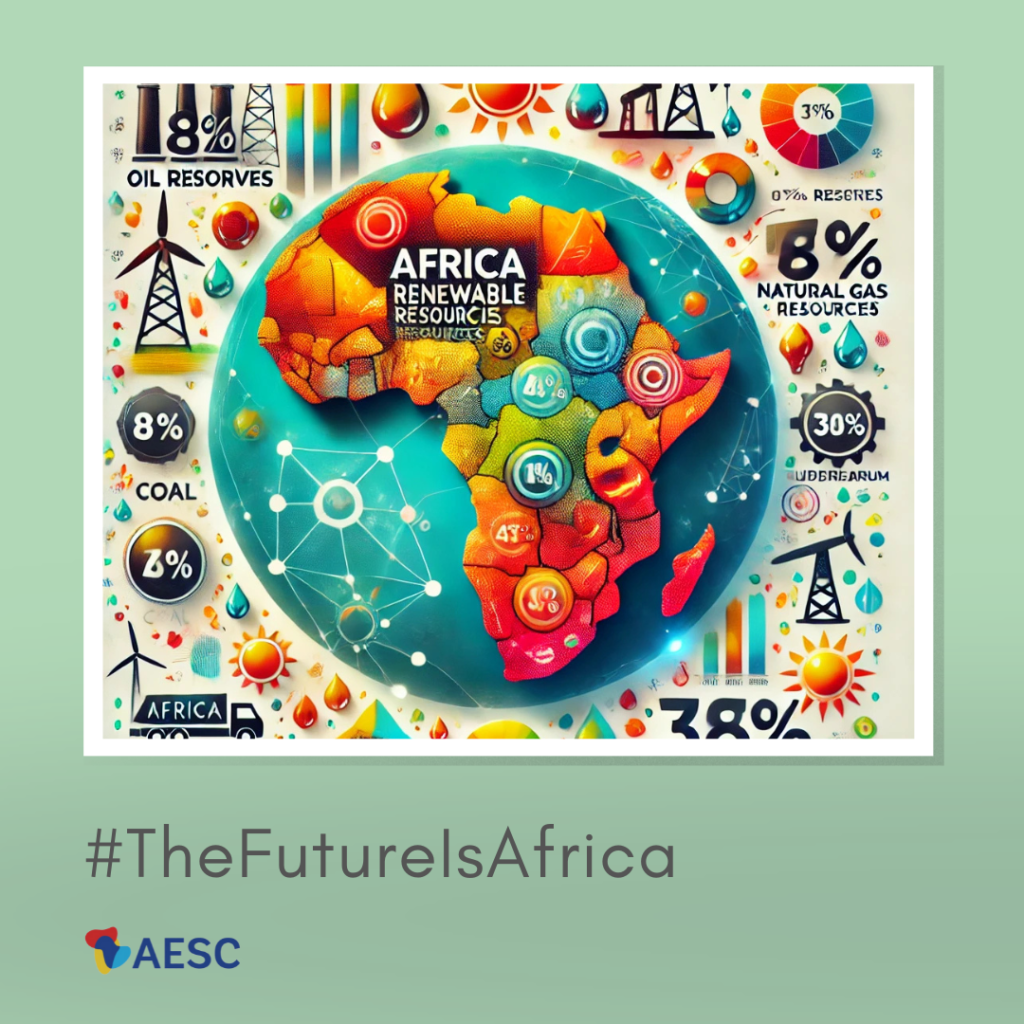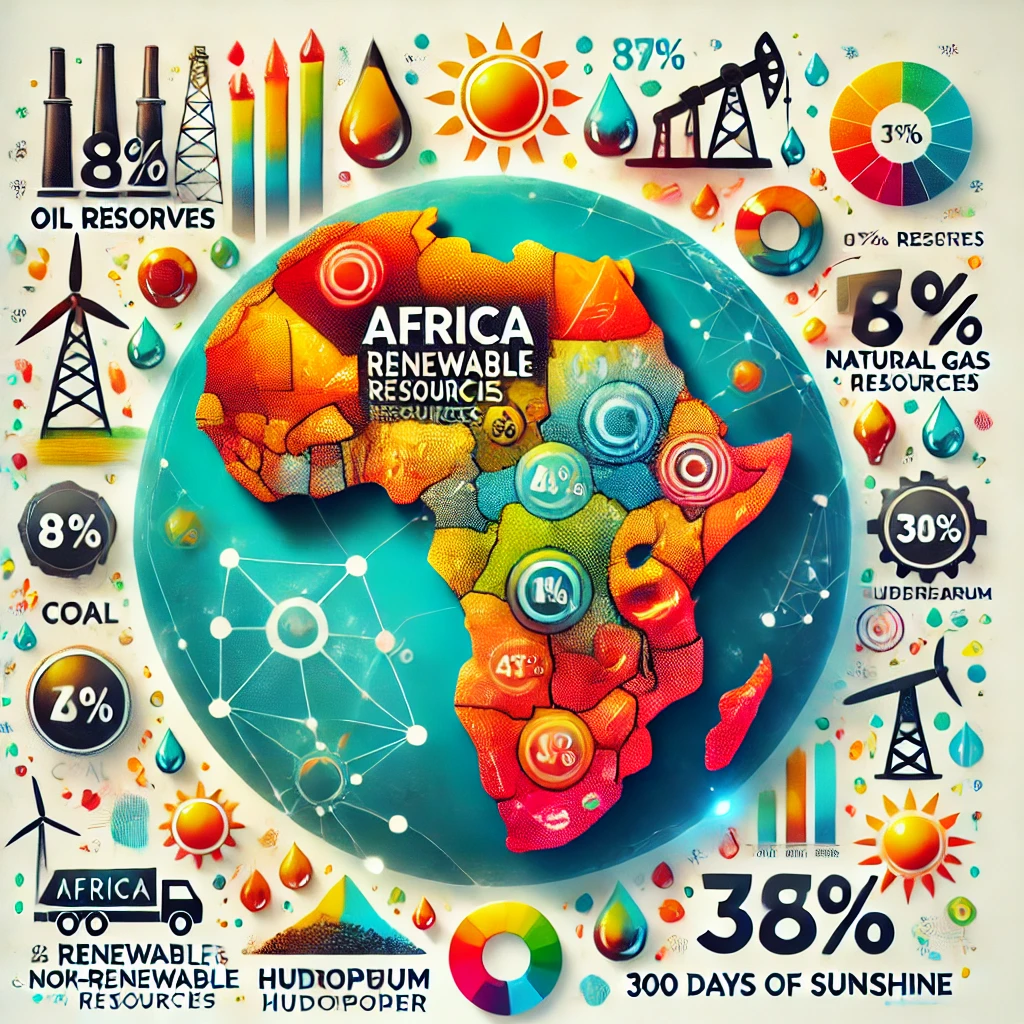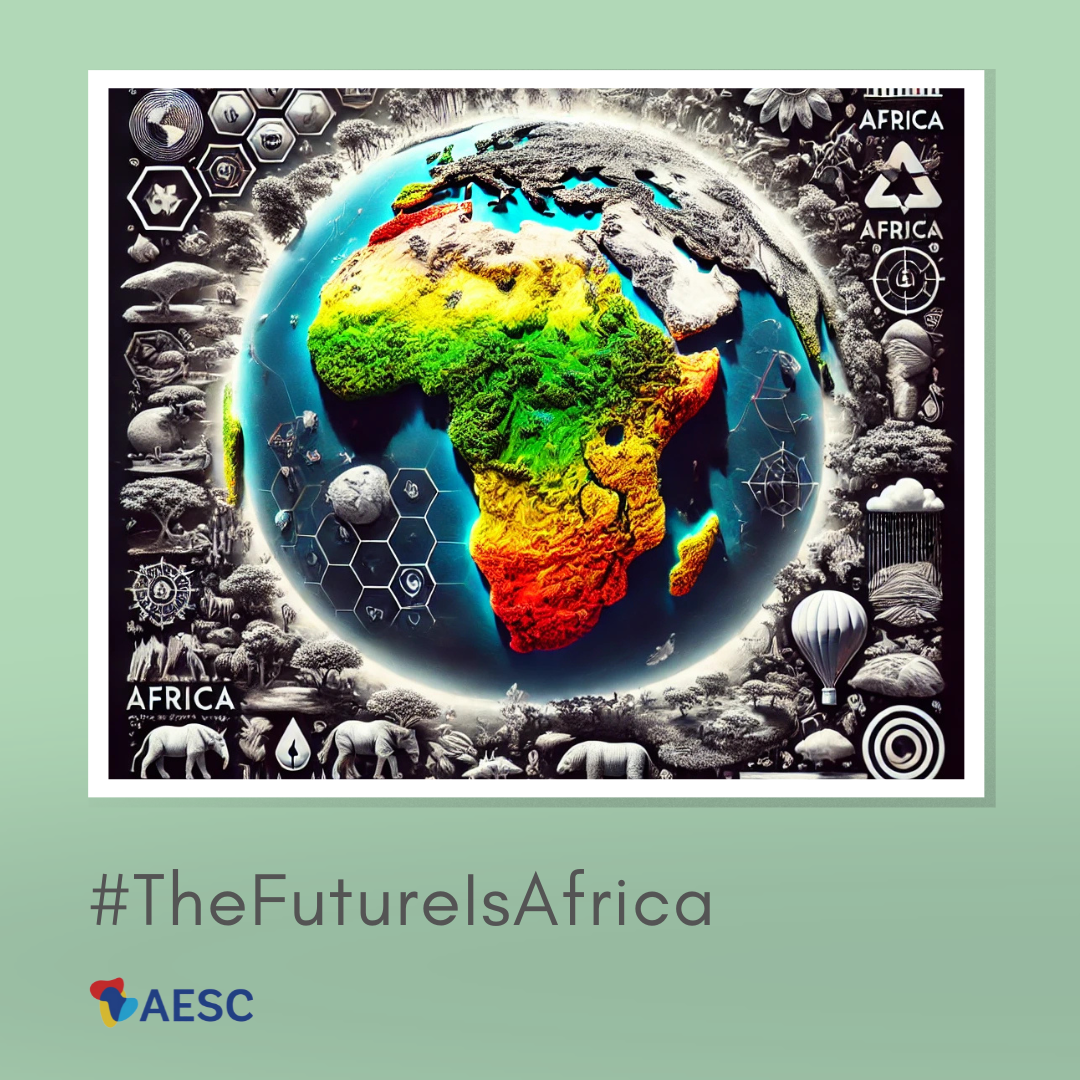
Energy Potential: Africa’s Role in Powering the Future
Africa’s vast and diverse energy resources make it a critical player in the global energy landscape. The continent possesses a wide array of conventional and renewable energy sources, including 8% of the world’s oil reserves, 7% of its natural gas reserves, and significant renewable energy potential. With 38% of the world’s wind energy resources, 10% of its hydropower capacity, and an average of 300 days of sunshine per year, Africa’s energy potential is unparalleled. These resources offer not only the opportunity to meet the continent’s growing energy demands but also to power global markets and support the world’s transition to cleaner, more sustainable energy systems. Harnessing this potential could fundamentally reshape Africa’s economic landscape and position it as a leader in the global energy transition.
1. Traditional Energy Resources: Oil, Gas, and Coal
Africa’s conventional energy reserves are extensive and strategically important. The continent holds 8% of the world’s oil reserves and 7% of its natural gas reserves, with countries like Nigeria, Angola, Algeria, and Egypt being major producers. These resources are vital not only for meeting Africa’s own energy demands but also for global markets, as the world continues to rely on oil and gas during the transition to renewables. In addition, Africa possesses 4% of the world’s coal reserves, located primarily in South Africa and Mozambique, which continue to be important for energy generation in these countries.
The strategic significance of these traditional energy sources extends beyond Africa’s borders. As global energy dynamics shift and countries seek diversified sources to enhance energy security, Africa’s reserves become increasingly valuable. The continent’s ability to supply energy to both domestic and international markets provides it with leverage in global energy politics and trade, positioning it as a critical supplier in an evolving energy economy.
However, to fully capitalize on its traditional energy resources, Africa needs to invest in refining and transportation infrastructure. By building local refineries and export terminals, African countries can enhance their ability to process and export oil and gas efficiently, increasing the value generated from these resources. Furthermore, developing these resources responsibly is essential to ensure they contribute positively to economic growth while minimizing environmental and social impacts.
2. Renewable Energy: A Cornerstone for Sustainable Development
Africa’s renewable energy resources are among the most significant in the world, and they are vital to the continent’s future as a leader in sustainable development. Africa possesses 10% of the world’s hydropower potential, with large river systems like Congo, Nile, and Zambezi providing opportunities for large-scale hydroelectric projects. Hydropower has already become a major energy source for countries such as Ethiopia, where the Grand Ethiopian Renaissance Dam (GERD) stands as one of the largest infrastructure projects in Africa’s history. Expanding hydropower capacity can provide a reliable and sustainable energy source for millions of Africans while also supporting regional energy integration and cooperation.
Wind energy also presents a significant opportunity for Africa, as the continent holds 38% of the world’s wind energy resources. Countries such as Morocco, Kenya, and South Africa have already made significant strides in wind energy development. The Lake Turkana Wind Power project in Kenya, for instance, is the largest wind farm in Africa and contributes significantly to the country’s energy mix. Such projects demonstrate the feasibility and potential of wind energy in Africa, offering a pathway to expand renewable energy infrastructure and reduce reliance on fossil fuels.
Solar energy is another area where Africa has a distinct advantage. With an average of 300 days of sunshine per year, the continent is ideally positioned to harness solar power. The potential for both large-scale solar farms and decentralized solar solutions, such as rooftop installations and solar mini-grids, is enormous. North African countries like Egypt and Morocco are already developing large solar farms, such as the Noor Ouarzazate Solar Complex, which is one of the largest concentrated solar power plants in the world. Expanding solar energy capacity across the continent not only provides a sustainable solution to meet growing energy demands but also creates opportunities for innovation, job creation, and economic development.
3. Geothermal and Uranium: Untapped Resources with Global Potential
Beyond hydropower, wind, and solar, Africa’s energy potential extends to geothermal and uranium resources. The continent holds 15% of the world’s geothermal potential, concentrated primarily in the East African Rift Valley. Countries like Kenya have already tapped into this resource, with geothermal plants providing a significant portion of their electricity needs. Geothermal energy offers a reliable, sustainable, and low-carbon energy source, which is crucial as Africa seeks to diversify its energy mix and reduce greenhouse gas emissions.
Africa’s uranium reserves, which account for 17% of the world’s supply, are another critical resource. Niger, Namibia, and South Africa are among the leading uranium producers on the continent. As the global energy sector continues to seek low-carbon energy sources, nuclear power remains a viable option, and Africa’s uranium reserves will become increasingly important. Developing this sector responsibly, with international partnerships and adherence to safety standards, could position Africa as a global supplier of nuclear fuel, contributing to energy security and diversification efforts worldwide.
4. Opportunities for Growth and the Green Economy
Africa’s vast energy potential presents a unique opportunity not only to power the continent’s economic growth but also to contribute to global energy security and sustainability. The expansion of renewable energy infrastructure across Africa could play a central role in achieving the United Nations’ Sustainable Development Goals (SDGs), particularly in areas related to affordable and clean energy (SDG 7), climate action (SDG 13), and economic growth (SDG 8).
By investing in renewable energy development, Africa can reduce its dependence on imported fuels, lower energy costs, and create jobs in the green economy. According to the International Renewable Energy Agency (IRENA), the renewable energy sector could generate millions of jobs across Africa in areas such as manufacturing, installation, maintenance, and energy services. Additionally, decentralizing energy production through solar mini-grids and off-grid solutions could extend electricity access to millions of rural households, promoting inclusive economic development and improving quality of life.
Africa’s energy resources also provide an opportunity to forge stronger international partnerships. As the global demand for clean energy technologies increases, countries and multinational companies are seeking partnerships in Africa to invest in renewable projects and access the continent’s rich resources. Initiatives like the African Union’s Africa Renewable Energy Initiative (AREI) and the African Development Bank’s Desert to Power program demonstrate a concerted effort to position Africa as a leader in the global renewable energy transition. These programs aim to transform the Sahel region into a hub for solar energy, creating a vast network of solar power stations that could generate electricity for millions and support Africa’s export potential.
5. Overcoming Challenges to Unlock Africa’s Energy Future
While Africa’s energy potential is vast, realizing it requires addressing several key challenges. Political stability, regulatory frameworks, and financing are critical factors influencing the development of energy projects. To attract investment and foster growth in the energy sector, African governments must create conducive environments through transparent policies, incentives for renewable energy projects, and partnerships that mitigate risks for investors.
Infrastructure development is another crucial area. Building transmission networks, expanding grid connections, and developing storage solutions will be necessary to ensure that energy generated reaches populations efficiently and reliably. Given the continent’s size and geographic diversity, a combination of large-scale and decentralized solutions will be essential to meet energy needs in both urban and rural areas.
Conclusion
Africa’s energy potential is unmatched, with vast reserves of both conventional and renewable resources. The continent’s 8% share of global oil reserves, 7% of natural gas reserves, and significant coal deposits provide immediate opportunities for economic development and energy security. However, the real promise of Africa lies in its renewable resources—38% of global wind energy potential, 10% of hydropower, 15% of geothermal resources, and extensive solar capacity. By harnessing these resources through strategic investments, partnerships, and sustainable development practices, Africa can become a global leader in the energy transition.



